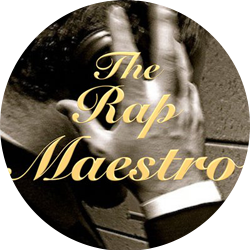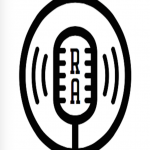All of the rappers in my own personal Top 10 are unique and special in their own way, just like their mamas always told ‘em. However, there are also certain overlaps between their artistic oeuvres. For instance, André 3000 and Nas have both utilized metric transference, which stands as a good measuring stick for just how technically complex a rapper is. But Kendrick Lamar, along with Eminem, is one of those few rappers about who it can truly be said that they’ve made certain songs in rap music that have never been done before, and have never been imitated since, even poorly.
“Rigamortis” is one of those songs.
The title of the song alone bespeaks some sort of consciousness of the history of rap or its poetic themes, as it recalls his West Coast godfather Dr. Dre and his lines about turtles dying from the 1987 N.W.A song “Express Yourself.” Poetic? Not the most. Rhyming? Yep, and that’s often good enough for Dre when he isn’t using a ghostwriter.
That, of course, is not true when we talk about Kendrick’s lines. As I say over and over in my articles — I should really get it tattooed somewhere — we can only appreciate rappers’ musical abilities when we understand the musical conventions that they’re working on top of. The important convention in “Rigamortis” is how choruses (also called hooks) are written in rap. This knowledge will allow us to see how Kendrick cleverly deviates from what used to be unquestioned musical commandments in order to make something knew. To see this, we need just the tiniest bit of music theory. Rappers brag by saying, “I got bars, I got bars.” Well, what the hell’s a bar?
A bar is the base unit for the musical system of time, just like a second is the base unit for a chronological system of time. Musicians use bars though, and not seconds, because seconds always last the same amount of time, while music can be either fast, like Macklemore’s “Can’t Hold Us,” or slow, like The Roots’ “Boom!”. Hence, bars can come at different speeds, because they don’t always have to last the same amount of time. The use of a bar, and not a second, expresses this difference. But just like seconds, bars are repeated over and over in order to make up longer lengths of times, like a whole musical section of a verse or a chorus. About 99.99% of the time, those bars are added up in groups of 4 to make those larger sections. For instance, verses usually last 16 bars, and choruses usually last 8, although there are small, differing exceptions sometimes.
In order to keep track of all of these moving parts, we’ll consider the following lines to be the first refrain, called Refrain 1, and say that multiple refrains add up to 1 full, 12-bar chorus during this song. You can hear “Rigamortis” here. In the below transcription, brackets [ ] surround the start and end of sentences, and the slashes / indicate where each succeeding bar stops before the next one begins.
crack the egg in your basket, you /
bastard] [i’m marilyn manson, don’t /
ask for your favorite rapper]
Below is the second refrain, Refrain 2. These exact lines occur at 1:31, 1:42, and 2:36, and also last 4 bars:
[he dead] /
[amen] /
[he dead] /
[amen] /
When you combine these 2 refrains, the entire 12-bar chorus that happens at 1:26 and 2:42 is this. It’s Refrain 2 + Refrain 1 + Refrain 2.
[he dead] /
[amen] /
[he dead] /
[amen] /
[got me breathing with dragons] [i’ll /
crack the egg in your basket, you /
bastard] [i’m marilyn manson] [don’t /
ask for your favorite rapper] /
[he dead] /
[amen] /
[he dead] /
[amen] /
However, the real chorus doesn’t appear until an unusually long time into the song, at 1:26. That’s because the first time the listener hears these lines it is in a far different musical structure than that more traditional, 12-bar chorus chorus. The first time a listener hears Refrain 1, it is in the varied form of what we can call Refrain 1B, at 0:13:
[got me breathing with dragons] [i’ll /
crack the egg in your basket you /
bastard] [i’m marilyn manson with /
madness] [now just imagine the /
magic i light to asses] [don’t /
ask for your favorite rapper]
Kendrick has now inserted a new line in the middle of Refrain 1. He’s added, “…with madness, now just imagine the magic I light to asses.” This makes refrain 1 not 4 bars long, but 6 bars long. Why did Kendrick do this? Put another way, why does this new refrain not just work, but work well?
The key is that those opening 6 bars just quoted start 10 bars into the song.
“But wait!”
Yes?
“Neither those 6 bars or 10 bars are a multiple of 4 bars that you said every rap section is made out of!”
Ah! You’ve got me. But what’s 6 bars plus 10 bars?
“Enough happy hours to put Bobby McFerrin out of business!”
Yes! But also…16 bars. Which is a multiple of four.
On the one hand, Kendrick could have repeated Refrain 1 in the exactly correct way so that it lasted only 4 bars. But that would have left his rap ending at bar 14. This is a problem because the musical loop behind him — made up of those melodically spiraling jazz instruments — is 4 bars long, so he would’ve ended the opening of the song halfway through his loop, which would sound awkward without some kind of explicit support (like a beat drop) from the musical accompaniment.
On the other hand, Kendrick could’ve again repeated Refrain 1 exactly and started at bar 8 or 12, which would line up the end of his opening with the end of his rap. But this would have been really, really boring, because that’s what 99.99% of other musicians do. So he decided to do what was on the other-other hand, and balance the 16 bars into 10 bars of an instrumental intro, plus the 6 bars of a slightly modulated Refrain 1. This is so musically groundbreaking that if all of my dozens of articles could be summarized in short, I would need only those 16 bars.
That relationship that’s just been described — the one between the lines of Kendrick’s verse and the lines of his chorus — is what drives this entire song, in a way that previously seemed impossible in rap. This is the core musical game that Kendrick is playing throughout this entire song.
*If you want more stuff like this — exclusive articles, sneak peeks of upcoming posts, excerpts from a book I’m writing — sign up for a weekly newsletter here.
Also, if you liked this article, you might enjoy these other ones, which are among my most popular:
1.) An analysis of Nas’ flow on the 2006 Busta Rhymes song “Don’t Get Carried Away,” which you can read here.
2.) My album review & analysis of the 2012 Kendrick Lamar album “good kid, m.A.A.d city,” which you can read here.
3.) A database of who the 23 most repetitive rappers in the industry are, available here.
4.) A study of every instrument Dr. Dre used on his songs between the years 2000 and 2009, online here.
5.) A breakdown of Eminem’s song “Business,” which you can check out here.


 Join the weekly RapAnalysis newsletter at
Join the weekly RapAnalysis newsletter at